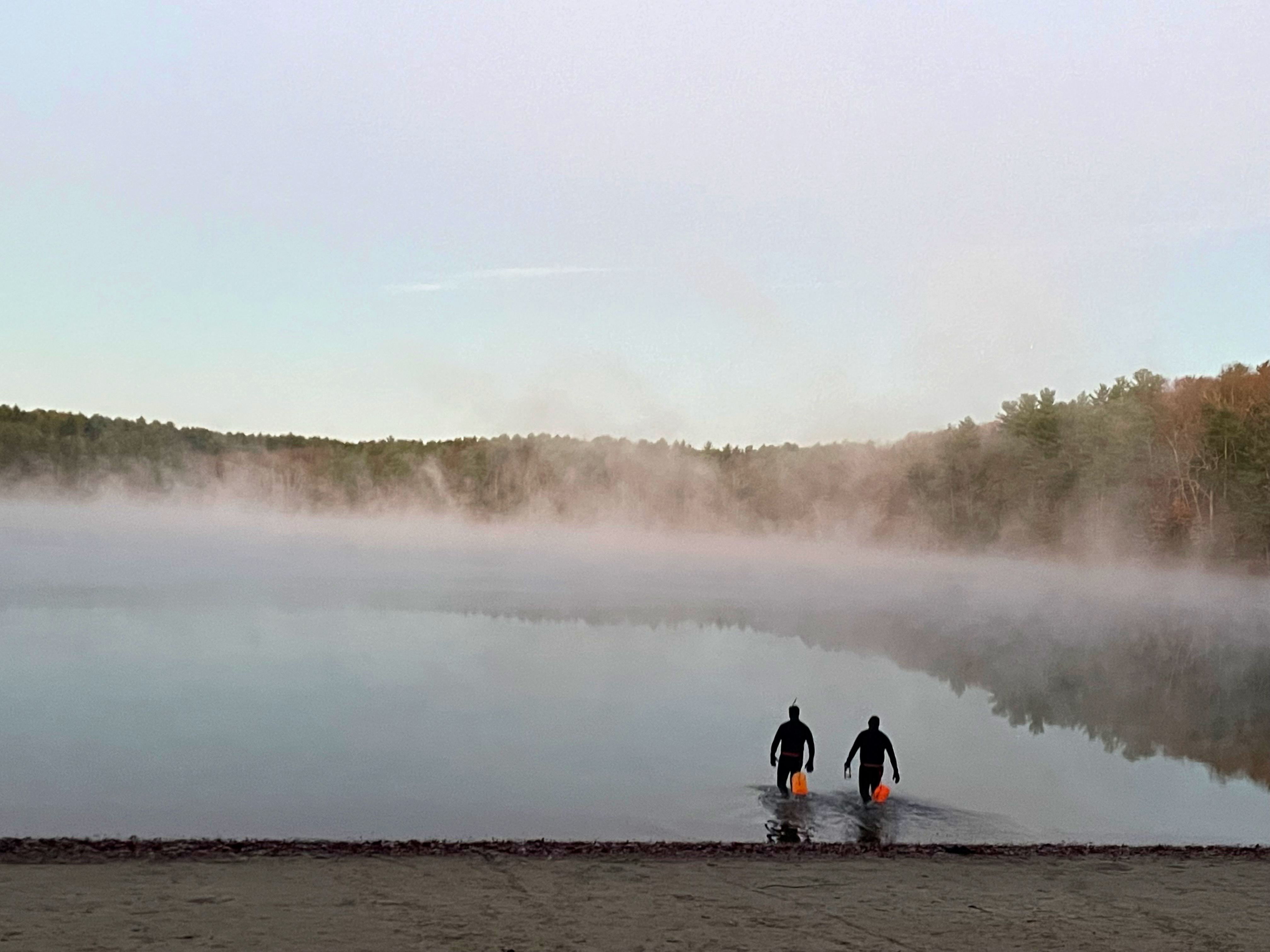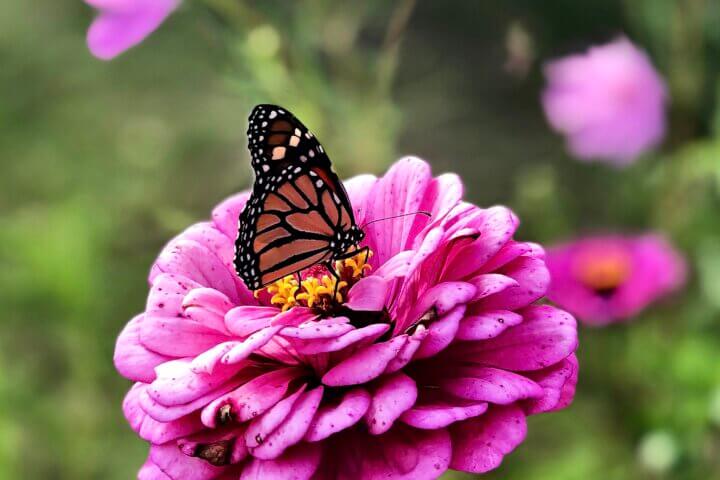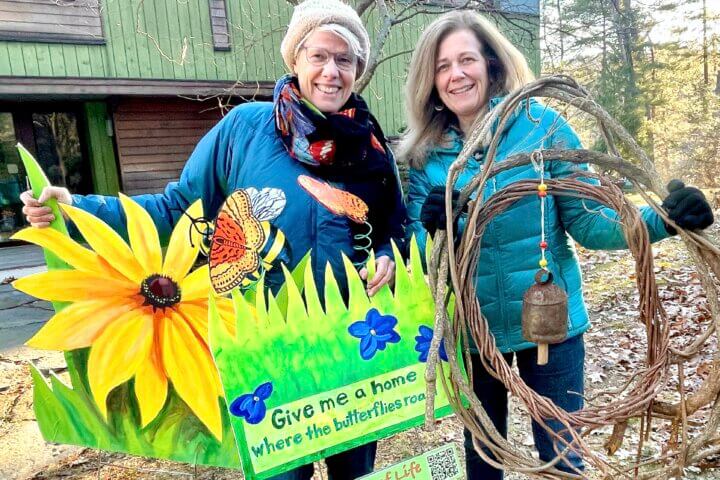There is nothing like the feeling of swimming in a clear, cool body of fresh water. The bottom drops away fast, and the sense of depth is quickly apparent. The trees seem greener and the sky bluer as you float and breathe. As old as the earth, the water quiets your ears and your mind — it’s like you can feel the presence of time itself. So clear and pure you could drink it, you get out of the pond refreshed and feeling clean, with no sticky seawater or chlorine to rinse off.
But not all ponds are made the same way. To understand more, we need to turn back nature’s clock.
Until 15,000 years ago, a massive sheet of ice a quarter mile thick covered New England. For 200,000 years the Laurentide Ice Sheet moved and shifted slowly along, carving the land beneath it. Then, about 15,000 years ago, it melted, retreating northward. Before it did, two big chunks fell off, landing right here in what we now call Concord. Sand and sediment filled in around these blocks of left-behind glacial ice.
When they finally melted, two deep holes were created, like someone buried a kettle and removed it later. This is why they are called “Kettle Holes” or, since they have filled with water, “Kettle Ponds.” Today, we call these two ancient glacial features Walden Pond and White Pond and we are very lucky to have them both here in town.
While thousands of ponds and lakes dot New England, most are shallow and weedy, fed by streams. Mud and muck line the bottom and vegetation typically crowd the banks. In these warm and fertile bodies of water, swimming can be a bit of a challenge.
Our kettle ponds, on the other hand, are very deep and their water comes from the aquifer itself, filtered naturally by rock and sand, seeping through their sides. Because of this, the water is crystal clear, glowing blue in the sunshine.
Walden Pond is 62 acres and, at over 100 feet, is the deepest body of freshwater in Massachusetts. White Pond is smaller at 40 acres, but also very deep (63 feet). This depth also prevents weeds from growing up from the bottom. This clear, deep water is why Walden and White Pond are so cherished by swimmers. For comparison, most local ponds have a maximum depth of just 10-12 feet, allowing sunlight to penetrate to the bottom which fuels aquatic weed growth.
Both of our kettle ponds have public access and, if you have never taken a dip in either, you are missing out. White Pond’s wonderful swimming beach at 50 Plainfield Road is owned by the town and Walden Pond’s state-managed access point is at 915 Walden Street. Both are usually uncrowded this time of year.
Some describe swimming out into these ancient bodies of water as a religious experience. For me, it is a way to literally be encompassed by nature. To feel the ancient depth of how this land was created eons ago, below me. Thoreau described Walden as the “earth’s eye; looking into which the beholder measures the depth of (one’s) own nature.” I agree.
The mornings are crisp now, as the earth tilts away from the sun and Fall arrives. But the water of our two ancient, glacially formed kettle ponds is still warm enough for an exhilarating swim. Until next month, I hope you will spend some Time Outdoors by swimming out in the middle, and then floating and breathing and feeling the power and beauty of the ancient water that holds you in its gentle grasp.
Wilson Kerr lives in Concord and is an avid outdoorsman and amateur naturalist. This monthly column is written to help grow awareness of the wonders of nature. In this increasingly fast-paced and technology-packed world, it is important to stop and take in the beauty of our area and the animals that inhabit it. The author hopes this column will be read by families and used as a teaching tool and that you will spend more… Time Outdoors.





